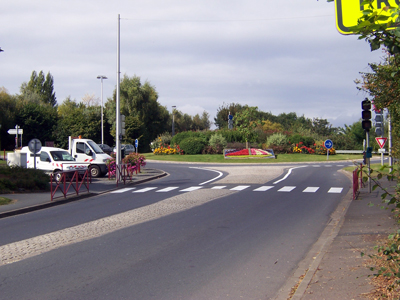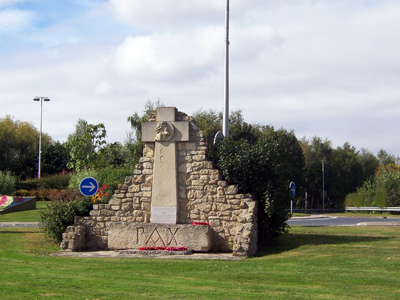
WWII: Maginot Line | Normandy | V-Weapon Sites | Arnhem
Further afield: Crete
| Home Tracing Military Ancestors Travel Advice CWGC Cemeteries Iron Harvest News Book Reviews Glossary Links Contact Me Normandy Landings:
 
|
Location 4 – T-Junction with the Caen-Ouistreham roadIt would be wrong to assume, however, that the capture of the bridges signalled the end of the battle. After securing the Orne River Bridge, Lieutenant Fox was ordered to join Nos. 1, 2 and 3 Platoons at Pegasus and prepare to defend it from inevitable German counter-attacks. At 0050 hours, as the men moved into their defensive positions around the Café Gondrée and the T-junction between the bridge road and the Caen – Ouistreham road, they heard the rumble of hundreds of aero-engines. It was 145 RAF transport aircraft carrying the 2,200 paratroopers of the 5th Parachute Brigade bound for drop zones marked out in the fields north of Ranville - vital reinforcements for Howard’s defenders.
Then, at 1330, the first counter-attack was launched when two German tanks tried to reach the bridge from the direction of Bénouville. They were met by the ubiquitous Sergeant Thornton of No 6 Platoon positioned near the T-junction and carrying the only serviceable anti-tank weapon,
"I don’t mind admitting it I was shaking like a bloody leaf as this bloody great thing appears. The lads behind me were only lightly armed with Bren guns, rifles and grenades. They wouldn’t stand a chance if I missed and the whole operation would be over. I was so nervous I was talking to myself, ‘This is it! You mustn’t miss’. The first tank, a Mark IV, had begun moving slowly down the road. I pulled the trigger on the PIAT. It was a direct hit. Machine-gun clips inside the tank set off grenades which set off shells. There was the most enormous explosion with bits and pieces flying everywhere and lighting up the darkness. To my delight, the other tank fled…I was so excited and so shaking I had to move back a bit."
Extract taken from By Air to Battle; The Official Account of the British Airborne Divisions, HMSO 1945.
The grit and determination of Sergeant Thornton convinced the Germans that the British held the area in strength and they decided to wait until daylight before making any further direct attacks on Pegasus Bridge.
|

